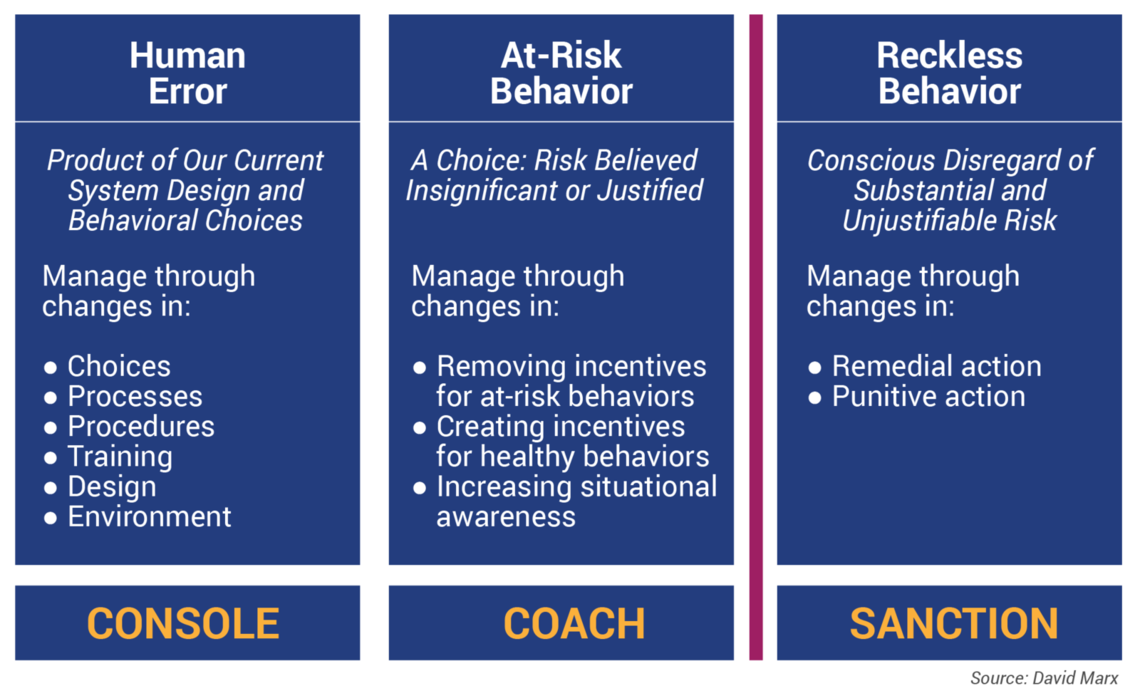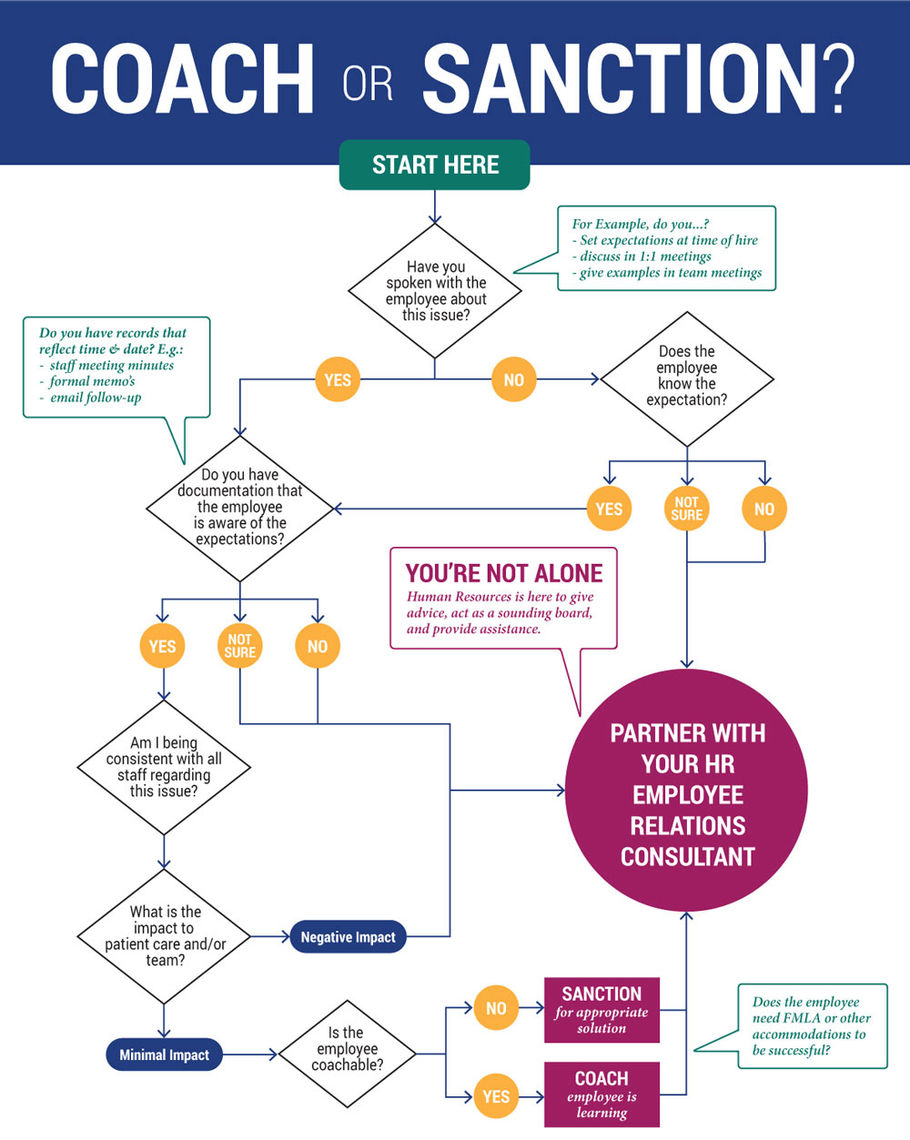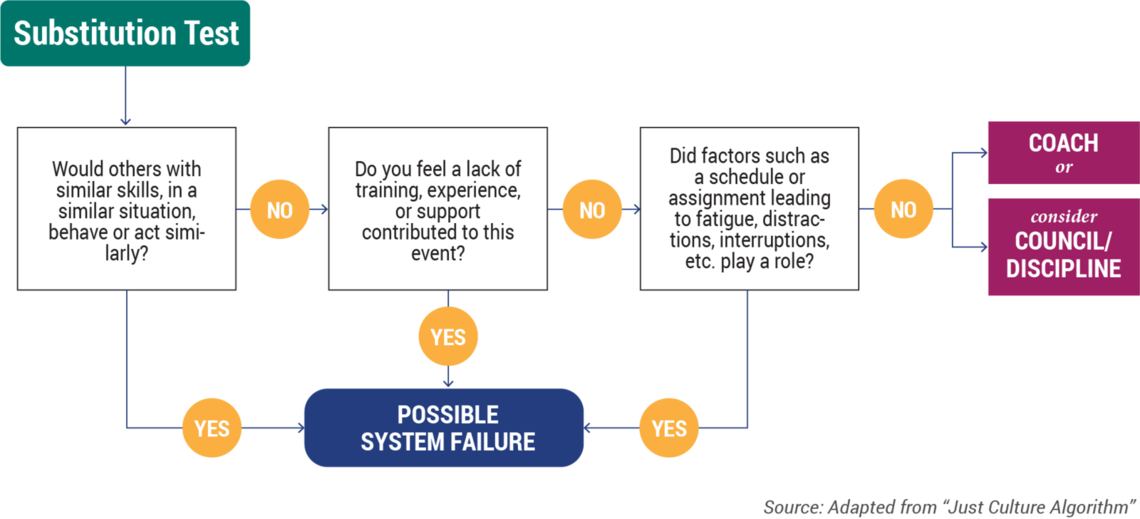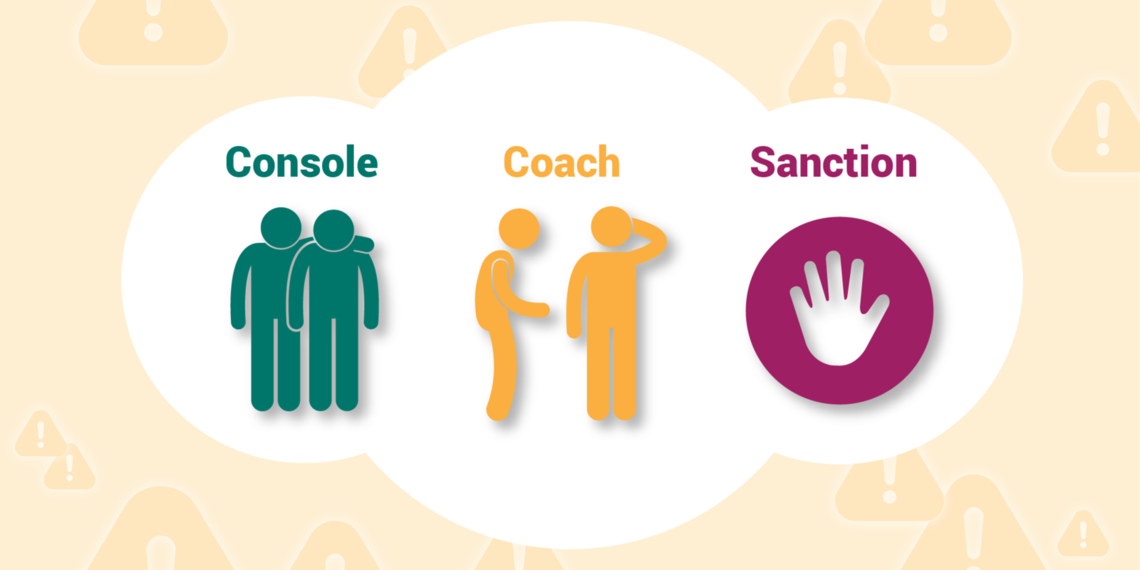istakes will always happen and safety events occur. One simple concept that we can apply immediately to manage the tough leadership calls associated with holding people accountable is “Console – Coach – Sanction.”
Here's the idea. The console – coach – sanction model gives individuals and teams a safe voice while balancing individual accountability.

CONSOLE – Mistakes happen, review process
When we examine our processes whether it be at the bedside, support services, or in the IT department, we have to be okay with knowing that perfection isn’t reality. By acknowledging that mistakes will happen, we take ownership of designing approaches to reduce human errors. We can give individuals and teams a voice by welcoming their input in finding solutions to errors. If we start to see patterns developing it’s crucial that we not “blame” the individual or team, but rather, work together to find the root cause of the issue and implement ways to resolve it.
COACH VS. SANCTION – Distinguish between the two
Engagement starts with intent. Even with your best intentions, sometimes you run into a situation where a team member chooses to detour from the well-designed system. It is at this crossroad that you need to decide—is this a coaching moment or a sanction moment?
It is a fine line between knowing when to coach or when to sanction. Here are 5 simple questions to ask courtesy of U of U Health Employee Relations to help kick start the process.

Console - Coach - Sanction for Patient Safety
At U of U Health, we ask three questions to determine if a report is a patient safety event:
- Was there a deviation from generally accepted practice standards?
- Did the deviation reach the patient?
- Did it cause harmHarm is defined as actual permanent harm, temporary harm where intervention may or may not have been required, and patient death.?
If the answer is yes to all three, then it’s a patient safety event. During an investigation into the root cause, we may apply the substitution test (below), adapted from David Marx’s Just Culture.

We can ask specific questions to help us determine if it’s a human error (console), at-risk behavior (coach), or reckless behavior (sanction). Specifically, we look at the substitution test and ask “would someone with similar skills, in a similar situation behave or act similarly?”
Case study – “Artemis fell”
| Artemis was admitted to U of U Health for heart failure. As a gentleman in his 60’s, he was a fiercely independent and proud man who strongly valued his privacy. To do the right thing, and give the patient some peace from a potentially noisy unit, the staff closed his door. When he rose to go to the bathroom he was weaker than he anticipated. Unfortunately, his walker was out of reach when he stood up. Once he was out of bed he could not reach the call light and fell. It took nearly 15 minutes for staff to recognize that he had fallen because he was out of the line of sight due to his door being closed. He suffered a broken hip and was taken to surgery, but ultimately, his heart was not strong enough and he did not survive to make a full and active recovery. |
Do we console, coach or sanction?
In the case of the fall event mentioned above, it was a newer health care assistant (HCA) who shut Artemis’ door. While there was an understanding on the unit that this “shouldn’t” happen, it was not in policy or available as information to the HCA as standard work. The nursing floor was loud, the patient desired privacy and the employee thought they were doing the right thing. In this case, we would consider it a systems error and console the HCA.
Raelynn Frederickson
Deborah Sax
Complex systems require complex cross-functional teams who often experience culture clash. Director of Patient Safety Iona Thraen joins nurse leaders Emily Salisbury and Doug Clapp to examine a recent safety event through the lens of “Wicked-Problem Solvers”—drawing insights from successful cross-functional teams.
Patient safety nurse coordinators Raelynn Fredrickson and Deborah Sax share an essential patient safety concept in honor of national patient safety awareness week.
A step-by-step discussion of the 7 elements of suicide care.
